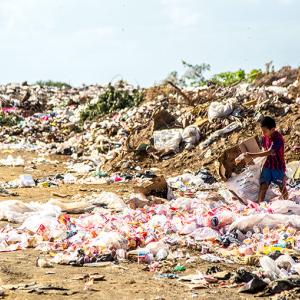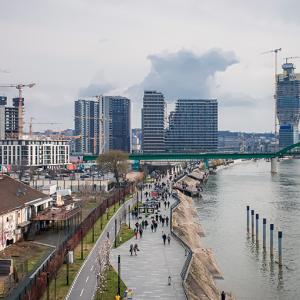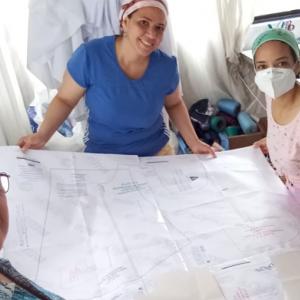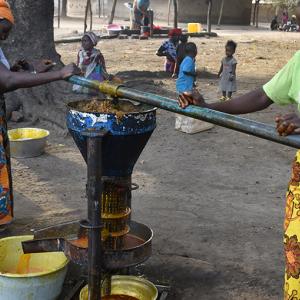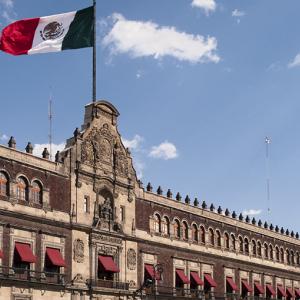5. Emphasize the potential of collective intelligence for agile policy-making and program design
A number of the Labs have demonstrated the value of collective intelligence approaches to inform more agile, localized and responsible governance. In Tanzania, for example, the team set out to understand the waste management practices in a semi-rural ward of Mwanza city, which had seen a rise of informal settlements as a result of urbanization. By using crowdmapping they created an up-to-date map of the infrastructure of this fast-changing neighborhood and identified potential sites of waste accumulation. These maps are already being used by the city’s Urban Water Supply and Sanitation Authority to understand how to adapt their waste collection services. Ukraine’s Ministry of Environmental Protection and Natural Resources is now aiming to scale the Lab’s data dashboard for open burning as a monitoring tool for estimating air quality and disaster risk. In Argentina, officials from the city administration and Ministry of Environment and Sustainable Development are planning to use the temperature and humidity measurements obtained by the sensors to design urban ‘climate corridors’. Although these examples are still at early stages, they provide a glimpse of how the Labs are helping governments make complex systems visible and understand problems closer to real time – enabling them to respond more effectively to localized issues.
6. Develop clear ‘hand-off’ mechanisms and routes to impact for prototypes
Many of the Labs have focused on creating prototypes using new methods. Some of these have generated interest from their national governments who have taken them on or are helping to scale what was developed. A good example of this is in Argentina, where the Lab has worked with both national and city level governments to adopt citizen sensing for environmental monitoring. Clearly identifying a ‘sponsor’ within the UNDP or government from the outset, and ensuring those stakeholders’ needs are factored into the design from the get-go, may help increase the likelihood that insights or prototypes find traction.
In Argentina, the Lab adapted the design of citizen science activities to collect environmental measurements that were more relevant to local urban planning decisions. In other cases, the prototypes have been taken up by the UNDP country office. For example in Zimbabwe, the analysis and visualizations produced by the Lab are being used to adapt the ways the country’s long-running Resilience Building Fund works with data for annual reporting. While in Vietnam, the Lab chose the locations for their waste management project in collaboration with UNDP environmental experts. This ensured that the resulting insights could be used to complement the ongoing work of the Climate Change Unit in these districts.
However, many of the case studies weren’t developed with a clear path to adoption or use. This is a common challenge for innovators tasked with socializing new methodological approaches. The Labs could overcome this by spending more time upfront articulating the change they want to create and involving key stakeholders early in the design phase.
7. Invest in building capacity for the wider ecosystem
The most successful collective intelligence initiatives within the UNDP Accelerator Lab Network have been achieved by partnering with local NGOs who already have some methodological expertise in working with non-traditional data sources or participatory methods. For example, in the Ukraine and Tanzania, both waste management projects depended on GIS expertise provided by their local civil society collaborators. Other Labs turned to experienced researchers based at universities, working with them on a consultancy basis. This was the route taken by the team in Vietnam to tap into GIS expertise and by the team in Mexico to identify an NLP researcher. These cases highlight the challenge that Labs face when it comes to finding appropriate partners. The Labs have also found it necessary to invest time in helping to build understanding of collective intelligence amongst the organizations and stakeholders they work with.
For collective intelligence methods to thrive, the entire development sector will need to invest in developing these 21st-century innovation skills locally, as well as across borders. One potential source of future talent is students. In Tanzania, Lao PDR and Argentina, the Labs all incorporated training and workshops with local students into their project designs, so students could then undertake crowdmapping and ethnography, and build DIY air pollution sensors. Involving groups of students helped the teams to complete vital project tasks, including data collection and hardware assembly, whilst helping to build future capacity in the local ecosystem. Country teams and Accelerator Labs should continue to cultivate skills in-house, as well as providing external training and workshops on collective intelligence methods. This will expand the pool of opportunities for collective intelligence methodologies to be applied at scale.


